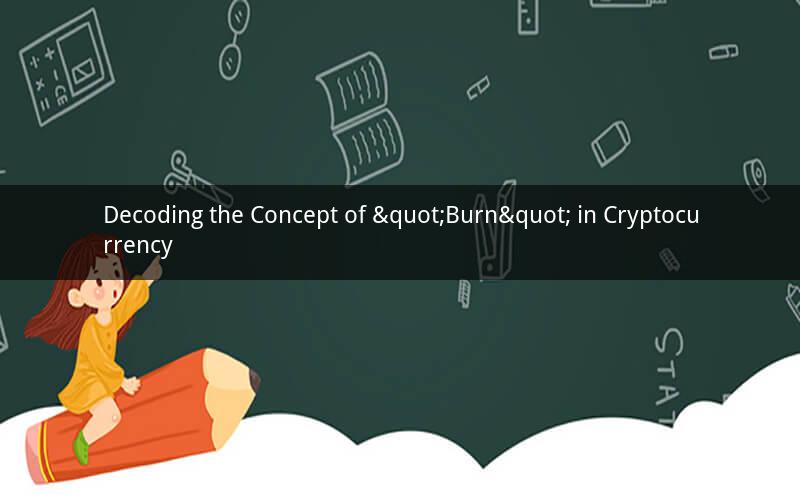
The world of cryptocurrency has introduced a plethora of innovative and sophisticated terms. One such term that has gained considerable attention is "burn." But what exactly does it mean? In this article, we will delve into the essence of "burn" in the cryptocurrency realm, exploring its significance, methodologies, and implications.
What is Burn in Cryptocurrency?
At its core, "burn" in cryptocurrency refers to the process of permanently removing coins or tokens from circulation. This action is aimed at reducing the total supply of a cryptocurrency, thereby potentially increasing its scarcity and, in turn, its value. By doing so, proponents of burning argue that it can help to combat inflation and promote a deflationary environment.
How Does the Burn Process Work?
The process of burning varies across different cryptocurrencies. However, the general steps involved in a burn are as follows:
1. Identify the tokens to be burned: The first step is to determine which tokens or coins will be burned. This can be a specific amount or a percentage of the total supply.
2. Transfer the tokens to a "burn address": Once the tokens are identified, they are transferred to a burn address. This address is a wallet designed specifically for burning purposes. It is often a multi-signature wallet, which requires multiple keys to authorize transactions.
3. Declare the burn: The cryptocurrency community is informed about the burn event. This can be done through social media, forums, or the cryptocurrency's official channels.
4. Confirmation of the burn: After the tokens are transferred to the burn address, they are considered burned. The blockchain ledger records the transaction, making it immutable and permanent.
5. Monitor the impact: Once the burn is confirmed, the cryptocurrency's community monitors its impact on the market. This includes tracking the token's price, supply, and other relevant metrics.
Why is Burning Important?
There are several reasons why cryptocurrencies opt for the burning process:
1. Scarcity: By reducing the total supply of a cryptocurrency, burning creates a sense of scarcity, which can drive up demand and, subsequently, the token's price.
2. Inflation Control: Burning can help to control inflation in a cryptocurrency. As the supply decreases, the value of the remaining coins may increase, leading to a more stable market.
3. Reward for HODLers: Burning rewards long-term holders of a cryptocurrency by reducing the number of coins available in the market. This can encourage HODLers to hold onto their tokens, further enhancing the coin's value.
4. Differentiation: Many new cryptocurrencies use burning as a unique selling point. By adopting this strategy, they can distinguish themselves from other cryptocurrencies in a crowded market.
5. Community Engagement: Burning often involves a transparent and participatory process, which can foster a sense of community and trust among the cryptocurrency's users.
5 Questions and Answers About Cryptocurrency Burning
1. Question: Can a cryptocurrency burn more than its total supply?
Answer: No, a cryptocurrency cannot burn more than its total supply. This would lead to negative supply and create inconsistencies in the market.
2. Question: Is burning a guaranteed way to increase the value of a cryptocurrency?
Answer: No, burning is not a guaranteed way to increase the value of a cryptocurrency. It depends on various factors, such as market conditions, demand, and overall investor sentiment.
3. Question: Can burned tokens be recovered?
Answer: No, burned tokens cannot be recovered. Once they are removed from the blockchain, they are gone forever.
4. Question: Are there any legal implications of burning cryptocurrency?
Answer: The legal implications of burning cryptocurrency depend on the jurisdiction. In some countries, it may be subject to regulations regarding financial transactions and securities.
5. Question: Can burning help a cryptocurrency recover from a bear market?
Answer: While burning can provide a temporary boost to a cryptocurrency's value, it is not a guaranteed solution for recovery from a bear market. Other factors, such as market sentiment and economic conditions, play a crucial role in a cryptocurrency's performance.
In conclusion, "burn" in cryptocurrency is a strategic process that involves permanently removing tokens from circulation. By reducing the supply, cryptocurrencies aim to create scarcity, control inflation, and potentially increase their value. However, it is essential to understand that burning is not a guaranteed solution for market success and is subject to various factors and legal implications.